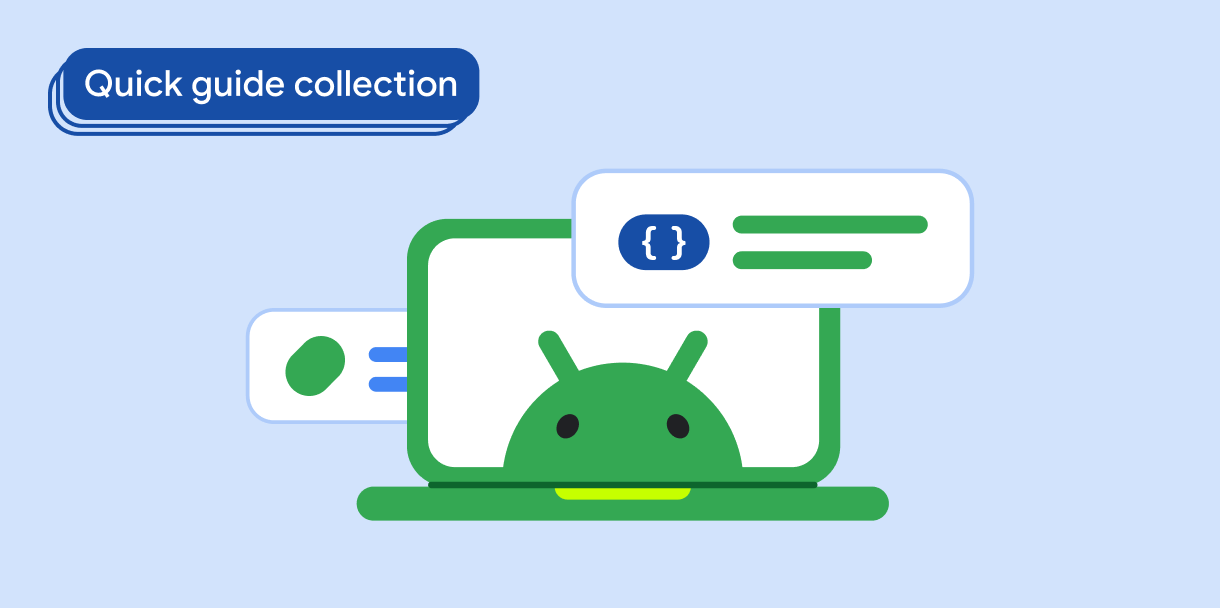عنصر Chip هو عنصر واجهة مستخدم تفاعلي ومكثّف. ويمثّل ذلك
الكيانات المعقدة، مثل جهة اتصال أو علامة، غالبًا باستخدام رمز وتصنيف. ويمكن أن يكون قابلاً للاختيار أو الإغلاق أو النقر عليه.
في ما يلي الأنواع الخمسة للشرائح وأماكن استخدامها المحتملة:
- المساعدة: يوجّه المستخدم أثناء تنفيذ مهمة. غالبًا ما يظهر كعنصر مؤقت في واجهة المستخدم استجابةً لإدخال المستخدم.
- الفلترة: تتيح للمستخدمين تحسين المحتوى من مجموعة من الخيارات. ويمكن تحديدها أو إلغاء تحديدها، وقد تتضمّن رمز علامة اختيار عند تحديدها.
- الإدخال: يمثّل المعلومات المقدَّمة من المستخدِم، مثل الخيارات في القائمة. ويمكن أن تحتوي على رمز ونص، ورمز X للإزالة.
- اقتراح: يوفّر اقتراحات للمستخدم استنادًا إلى نشاطه أو إدخاله الأخير. تظهر عادةً أسفل حقل إدخال لطلب إجراءات المستخدم.
- مرتفع: يتميز بمظهر مرتفع بدلاً من مظهر مسطّح.
توافق الإصدار
يتطلّب هذا التنفيذ ضبط الحد الأدنى من إصدار حزمة SDK لمشروعك على المستوى 21 من واجهة برمجة التطبيقات أو إصدار أحدث.
التبعيات
إنشاء شريحة مساعدة
توفّر المكونات القابلة للتجميع AssistChip طريقة مباشرة لإنشاء chip
مساعدة تدفع المستخدم في اتجاه معيّن. من الميزات المميزة
لهذه الشريحة المَعلمة leadingIcon التي تتيح لك عرض رمز على سمته
اليسار من الشريحة، كما هو موضّح في الشكل 1. يوضّح المثال التالي كيفية
تنفيذ ذلك:

إنشاء شريحة فلتر
يتطلّب العنصر القابل للتجميع FilterChip تتبُّع ما إذا تم اختيار الشريحة
أم لا. يوضّح المثال التالي كيفية عرض رمز تمييز في بداية العبارة
فقط عندما يختار المستخدم الشريحة:
النتائج


إنشاء شريحة إدخال
يمكنك استخدام العنصر القابل للتجميع InputChip لإنشاء شرائح ناتجة عن
تفاعل المستخدم. على سبيل المثال، في برنامج بريد إلكتروني، عندما يكتب المستخدم
رسالة إلكترونية، قد تمثّل شريحة الإدخال شخصًا أدخل المستخدم عنوانه
في الحقل "إلى:".
يوضّح الإجراء التالي شريحة إدخال في حالة محددة. يُغلق المستخدم الشريحة عند الضغط عليها.
النتائج

إنشاء شريحة اقتراح
عنصر SuggestionChip هو أبسط العناصر القابلة للتجميع المدرَجة
في هذه الصفحة، سواء من حيث تعريف واجهة برمجة التطبيقات أو حالات الاستخدام الشائعة. تقدّم شرائح الاقتراحات
إشارات يتم إنشاؤها ديناميكيًا. على سبيل المثال، في تطبيق محادثة يستند إلى الذكاء الاصطناعي،
يمكنك استخدام شرائح الاقتراحات لتقديم الردود المحتملة على أحدث
رسالة.
راجِع عملية تنفيذ SuggestionChip التالية:
النتائج

إنشاء شريحة مرتفعة
تستخدِم جميع الأمثلة الواردة في هذا المستند العناصر الأساسية التي تأخذ شكلًا مسطّحًا. إذا كنت تريد شريحة ذات مظهر بارز، استخدِم أحد العناصر القابلة للتجميع التالية:
النقاط الرئيسية
تتطابق أربعة عناصر قابلة للتجميع مع الأنواع الأربعة من الشرائح، وتتشارك المَعلمات التالية:
label: السلسلة التي تظهر على الشريحةicon: الرمز المعروض في بداية الشريحة تحتوي بعض العناصر القابلة للإنشاء على مَعلمتَيleadingIconوtrailingIconمنفصلتَين.onClick: دالة LAMBDA التي تستدعيها الشريحة عندما ينقر عليها المستخدم.
المجموعات التي تتضمّن هذا الدليل
هذا الدليل هو جزء من مجموعات الأدلة السريعة المنظَّمة التي تتناول أهداف تطوير Android الأوسع نطاقًا:




